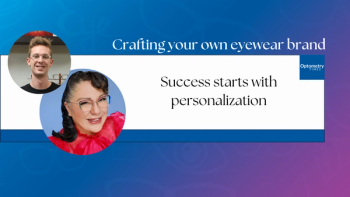
AAOpt 2024: AAO-sponsored report recommends a disease classification for myopia
Six topics were assessed in the report, including global data on myopia prevalence, technology, environmental and genetic contributions to myopia onset and progression, and mechanistic causes of myopia pathogenesis, among others.
The American Academy of Optometry has sponsored a National Academies of Sciences, Engineering, and Medicine (NASEM) that has recommended that the Centers for Medicare and Medicaid Services classify myopia as a disease.1 The report, entitled “Myopia: Causes, Prevention, and Treatment of an Increasingly Common Disease,” compiled from a consensus study, works to identify and assess the current mechanistic understanding of myopia pathogenesis and the causes of its increased prevalence.
“This reclassification is to ensure efforts are undertaken not only to treat blurry vision resulting from uncorrected or undercorrected refractive error but also to ensure that stakeholders such as federal and state agencies, professional associations, patients, and caregivers are investing in the prevention and management of myopia,” the report authors stated. “Funding agencies should support innovative, multidisciplinary research to identify mechanisms and novel treatments for myopia. Collaborative efforts involving healthcare providers, policymakers, researchers, and funding agencies are essential to tackle this disease effectively.”
Six topics were assessed in the report, including global data on myopia prevalence, technology, environmental and genetic contributions to myopia onset and progression, mechanistic causes of myopia pathogenesis, treatment optics for myopia, and barriers to vision care for children with myopia. One of the findings from the report suggests that environmental factors could have a larger influence on myopia development than genetics, with outdoor time during daylight having a protective effect. Additionally, diagnostics, management, and understanding of myopia has the potential to improve with the development of diagnostic technologies that can detect newly understood biomarkers for myopia, such as axial elongation, changes in choroidal thickness and ocular shape, and optical aberations. However, report authors recommended further clinical studies to establish the role of these biomarkers and technology in clinical care and research.1
According to the report, given the increased prevalence of both myopia and high myopia (in excess of -5.00 diopters), the benefit of slowing down myopia growth by one diopter is associated with a 40% reduction in the risk of myopic maculopathy.2 However, currently available treatments have not been able to slow myopia by more than .075 diopters in 2 years.3 Given the risk of ocular health to the myopic eye, the report states that the importance of addressing both myopia and myopia progression suggests that it should be classified as a disease.1
“Despite decades of research in myopia, there is much to be learned,” the report authors stated. “The preponderance of evidence suggests that myopia should be treated beyond simply correcting blurry vision. It is a disease that can affect long-term visual health. Effectively treating myopia will require audacious research that translates vision and animal science to clinical practice patterns. Care of the myopic child who becomes the myopic adult will require intentional integration and coordinated strategic policies as the local, state, national, and global levels. Myopia is no longer just for eye doctors.”
Additionally, the report found that consistency in myopia research is lacking. The research on the increasing prevalence of myopia is gathered mainly from international studies, with evidence lacking in the US due to lack of standardized definitions of myopia, irregular and inconsistent screening practices locally and nationally, and varied assessment techniques. Additionally, gaps were found in knowledge on the impact on myopic eye growth of “near work,” which includes readings or other activities that require eyes to be focused up close. Evidence also suggests that visual diet, such as spectra and contrast from different light sources, could be a factor in eye growth, but information on the topic is lacking.1
References:
National Academies of Sciences, Engineering, and Medicine. 2024. Myopia: Causes, Prevention, and Treatment of an Increasingly Common Disease. Washington, DC: National Academies Press. Accessed October 30, 2024.
https://doi.org/10.17226/27734 .Bullimore MA, Brennan NA. Myopia control: Why each diopter matters. Opt and Vis Sci. 2019;96(6),463–465. https://doi.org/10.1097/OPX.0000000000001367
Lawrenson JG, Shah R, Huntjens B, Downie LE, Virgili G, Dhakal R, et al. Interventions for myopia control in children: A living systematic review and network meta-analysis. The Cochrane Dat of Syst Reviews. 2023;2(2). https://doi.org/10.1002/14651858.CD014758.pub2
Newsletter
Want more insights like this? Subscribe to Optometry Times and get clinical pearls and practice tips delivered straight to your inbox.
















































.png)


